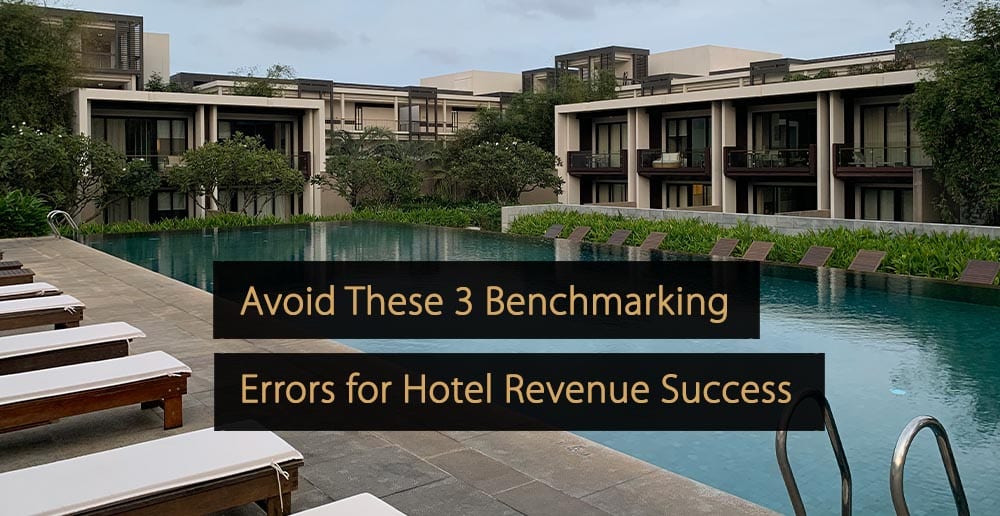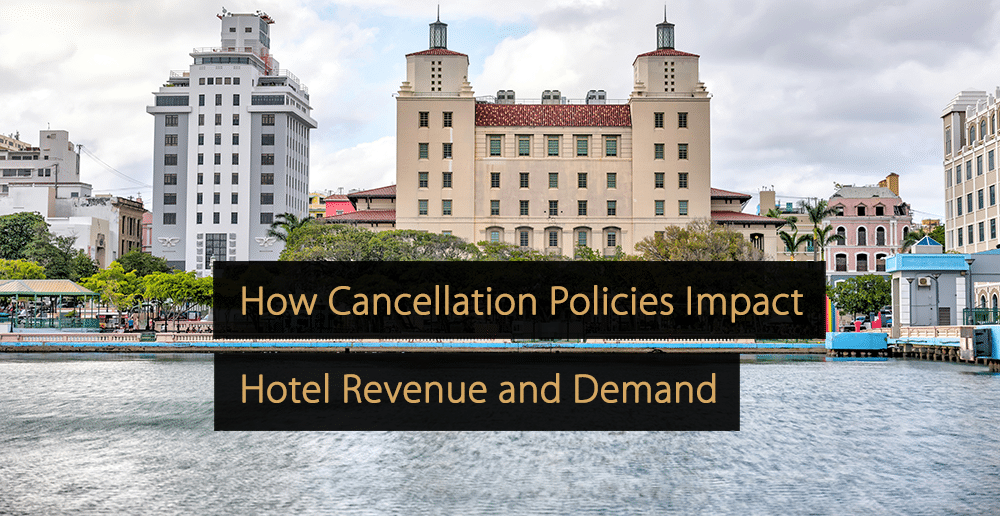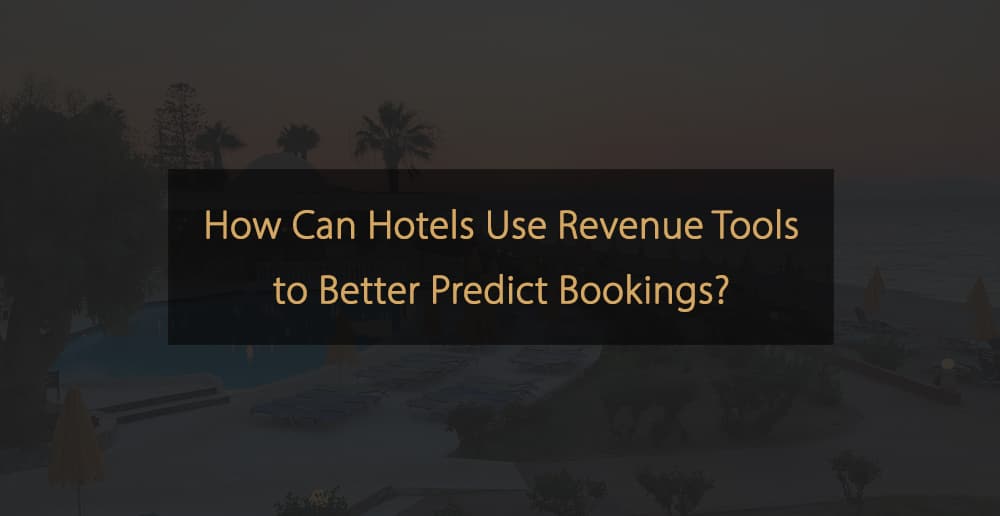As a revenue manager, you’re undoubtedly aware of the importance of gauging your hotel’s performance to maintain a competitive edge in your market. Yet, how can you be certain that you’re genuinely on par with, or preferably ahead of, your competitors? Enter benchmarking for hotel revenue management.
Benchmarking for Hotel Revenue Management: 3 Cardinal Errors
Benchmarking offers the essential context and illuminates areas of your revenue management strategy that are ripe for refinement. This ensures that your hotel is not just keeping pace but potentially outpacing your competition’s growth. By evaluating your competitors’ successes and shortcomings, you can develop a strategic plan to enhance your performance.
This approach allows you to seize any available opportunities in your market, giving your hotel the upper hand. Benchmarking also serves as an indispensable practice for monitoring your performance against internal success indicators, like your budget and forecast. By juxtaposing your current outcomes with past results, you can create a reference point and establish attainable targets and objectives.
Thus, benchmarking functions as a measuring stick to verify whether you’re progressing towards your goals or deviating from the intended path. If so, you can make decisions to get back on track. However, effective benchmarking can be more challenging than it appears. In this blog post, we’ll look at some prevalent benchmarking missteps and offer insights on circumventing them.
1. Selecting an Incorrect Competitive Set
One of the most common mistakes when benchmarking your hotel’s performance is failing to accurately select the appropriate competitors for your hotel’s competitive set. A competitive set, or compset, comprises hotels with similarities in location, amenities, size, and target market. Benchmarking against a non-comparable competitive set may distort your perceived performance, leading to misguided decision-making that significantly undermines your benchmarking efforts, potentially resulting in revenue loss.
For instance, when scrutinizing a hotel’s occupancy performance, comparing a hotel with a significantly smaller room count might create an illusion of underperformance for the larger hotel, skewing your ranking. Similarly, if your compset comprises hotels that are too luxurious, with higher Average Daily Rates (ADR), you might unintentionally adjust prices to match, potentially pricing yourself out of the market and compromising occupancy and revenue. On the flip side, benchmarking against a competitive set that offers less than you do could result in unrealized revenue potential, especially if you mimic your competitors by offering lower rates than your quality warrants. Choosing a competitive set can be complex and influenced by various factors.
A straightforward method to determine a compset is to consider where guests would seek accommodation if your hotel was fully booked. What alternatives would they consider comparable to your property and its offerings? Your compset should include hotels with similar characteristics to avoid misleading data and ensure relevant benchmarking. If you manage a mid-range hotel in a popular tourist destination, your compset might consist of other mid-range hotels in the vicinity with analogous amenities and target markets. Benchmarking against these hotels will provide a more accurate understanding of your hotel’s market performance and highlight areas for improvement.
2. Failing to Monitor Market Demand Outside Your Compset
Another widespread error in revenue management benchmarking is neglecting a comprehensive market view. It’s vital to understand that your hotel does not operate in isolation, and external factors can significantly influence the broader market, consequently affecting your property’s performance.
To capitalize on potential opportunities, it’s vital to stay watchful and receptive to market changes beyond your compset, especially considering the recent dynamic nature of the hospitality industry. A myopic view of the market can lead you to incorrectly assume that your competitive set is emblematic of the entire market, when in reality, there could be other hotels encroaching on your market share or discovering new opportunities that you’re unaware of. A prime illustration is the surge in bleisure travel, where travelers combine business and leisure trips.
This trend has prompted many hotels and brands to create offerings that cater to travelers seeking extended stays, with amenities like kitchens, workspaces, and self-service laundry. You risk lagging and missing out on potential revenue by overlooking what’s trending in your market. Concurrently, disregarding micro trends in your market by not fully understanding the key demand generators or omitting a local event from your calendar could result in missed revenue opportunities. For instance, if your hotel is in a popular beach destination, it’s crucial to consider the market’s seasonal nature and adjust your benchmarking accordingly.
Likewise, if there’s a major event in town, it’s important to understand how the increased demand might impact your hotel’s performance relative to competitors. If you don’t have real-time data on these wider market conditions, you risk mismanaging your rates and inventory controls. This could lead to a below-average market share in occupancy or a Revenue Per Available Room (RevPAR) that falls short of the market average during event dates. Moreover, you might overlook opportunities to attract travelers willing to pay a premium for a unique guest experience or a specific location. Adopting a holistic view of the market is crucial for effective benchmarking. It provides insights that could pave the way for innovative business growth strategies, beyond merely mirroring what your competitors are doing.
3. Rushing Into Revenue Decisions
When evaluating your revenue strategy, it’s essential to focus on continuous improvement and understand that a strategy requires time to yield noticeable gains. A common pitfall for revenue managers is frequently altering their strategy in response to an underperforming KPI in a benchmarking report, and then making further changes when immediate results aren’t apparent. This approach makes it challenging to pinpoint which modifications were effective or ineffective.
The key to successful benchmarking lies in discerning when to adapt or adjust your strategy. This discernment stems from experience in your market and role, bolstered by the inclusion of high-quality data to substantiate your hypotheses. As the behavior of travelers has grown more unpredictable, booking patterns have evolved, and previously accepted revenue management assumptions are regularly challenged. Factors such as booking windows, lengths of stay, source markets, and customer profiles have all undergone shifts, adding complexity to the benchmarking process.
This challenge is compounded by the fact that, in many cases, revenue managers rely on data for benchmarking that is only updated weekly. This results in an inevitable delay between the most recent data and the impact of any adjustments made to your strategy. Given that hotels operate round-the-clock, the market data is in a constant state of flux. What was pertinent yesterday may no longer hold relevance today. This is particularly true when managing tight booking windows. A sensible first step would be to define what is considered “normal” for your market – how frequently prices fluctuate, what the typical lead times are, and what the Average Daily Rate (ADR) is.
This necessitates ongoing data analysis. You can accomplish this by monitoring competitor pricing and tracking key metrics such as ADR, RevPAR, and occupancy rate over time to identify trends. Utilizing your in-house Property Management System (PMS), which houses crucial data, can also compare these trends against previous periods. You can monitor your pickup rates against yesterday or last week, track how you’re pacing against last year’s or your budget, and forecast for those key metrics.
Integrating your PMS data with a robust BI platform lets you tap into detailed performance insights. By consistently monitoring these metrics in the market and observing how your property is performing against them, you’ll start to identify where and when you’re deviating from your KPIs. This will allow you to implement measures to realign your performance with your targets.
When used correctly, benchmarking is a crucial instrument for revenue managers. It facilitates revenue growth by monitoring the KPIs that are most significant to your business. From here, you can identify areas for improvement and uncover new opportunities.
More Tips to Grow Your Business
Revfine.com is the leading knowledge platform for the hospitality and travel industry. Professionals use our insights, strategies, and actionable tips to get inspired, optimize revenue, innovate processes, and improve customer experience.Explore expert advice on management, marketing, revenue management, operations, software, and technology in our dedicated Hotel, Hospitality, and Travel & Tourism categories.








Leave A Comment